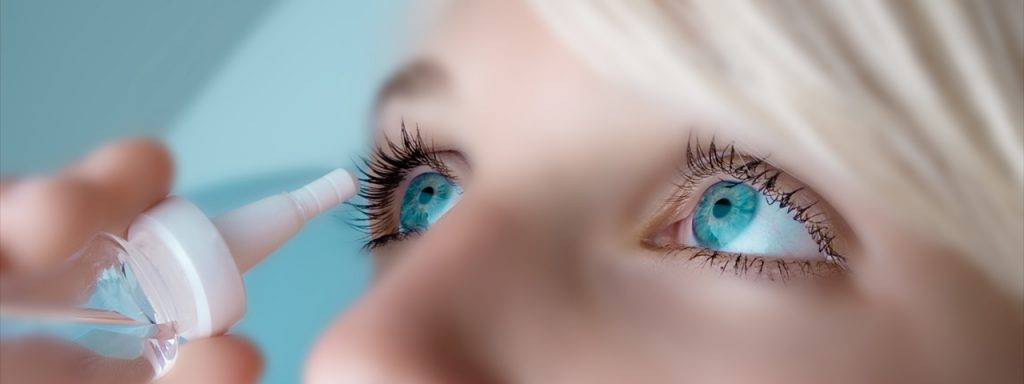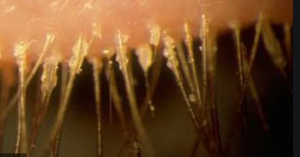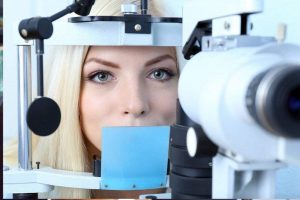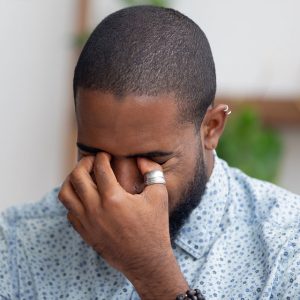What are eye drops used for?
Eye drops are commonly administered or prescribed by eye doctors for a number of different reasons.
The most common reasons include:
- Dilating the eye’s pupil
- Relaxing the focusing lens
- Lubricating dry eyes
- Relieving eye allergies
- Treating glaucoma
- Healing infections
- Clearing red-eye
- Diminishing eye pain
Dilation of the pupil
A comprehensive eye exam includes a thorough examination of your vision and ocular health. During the examination, your eye doctor may insert drops into your lower lid to enlarge your pupils— this is called mydriasis. Pupil dilation enables a clear view of the inner eye and all of its structures— more specifically the lens, vitreous, and retina. Mydriasis is necessary for detection of ocular disease.
Don’t be alarmed if you feel some mild stinging after the eye drops are inserted— this sensation only lasts a few seconds!
Will my vision be affected by the eye drops?
The eye drops will cause blurry near vision and light sensitivity for as long as your pupils remain dilated.
Many eye doctors recommend bringing sunglasses to your appointment to ease any discomfort after the exam.
Also, if you wear contact lenses, bring a pair of glasses to your appointment, since the eye drops contain preservatives that can be absorbed by contact lenses and cause irritation.
It is rare to have an allergic reaction to the dilating eye drops, but it is important to be aware of the symptoms of an allergic reaction, such as dry mouth, flush face, rapid pulse and fever.
After your eye exam, you may return to work and resume regular daily tasks— though they may be difficult as blurred near vision and sensitivity to light can be uncomfortable.
How long do the effects last for?
The dilating drops take approximately 10–20 minutes to work, and the effects gradually wear off over the course of a few hours.
The effects can last up to six hours— depending on the concentration of the eye drops, as well as the individual patient. People with lighter eyes tend to feel the effects of the drops longer than those with darker eyes.
Eye drops for relaxing the lens
During an eye exam, your focusing lens may work harder than usual to provide clear vision. To obtain an accurate measure of a refractive error, your lens must be relaxed.
For this reason, your doctor may use drops for cycloplegia, or relaxing the lens.
Cycloplegia is necessary for obtaining an accurate measure of a refractive error. With the use of special lenses, your eye doctor will calculate a precise optical prescription that will facilitate clearer vision.
These drops will also dilate the pupil and cause blurred near vision and sensitivity to bright lights for a few hours.
Eye drops for dry eyes
Eye drops are a common method used to treat dry eyes, but knowing which drops to use is essential.
Dry eyes are a common condition that results from insufficient tear quantity, or inadequate tear quality. Dry eyes cause many uncomfortable symptoms that can impact your performance at work and during recreational activities.
Dry eyes can range from a mild inconvenience to a chronic problem. The most frequent cause of dry eyes is meibomian gland dysfunction (MGD), which lowers the oil content of the tears. Other causes of dry eye syndrome include blepharitis, which is an eyelid infection, and reactions to medications such as antihistamines, which are used to control allergies.
In addition, dry eyes can be caused by contact lenses, pink eye, dry weather, exhaustion, or a nutritional deficiency of omega-3 fatty acids.
According to the American Optometric Association (AOA), prolonged use of digital devices results in reduced blinking— causing a faster evaporation of lubricating tears. When this occurs, dry eye symptoms result.
Lubricating eye drops/ Artificial tears
Dry eyes can range from a mild inconvenience, to a chronic problem. Many patients will feel relief from their symptoms with regular use of artificial tears lubricating eye drops, and some lifestyle changes.
In most cases, lubricating eye drops will provide sufficient relief of symptoms that occur as a result of exhaustion or living in a dry climate. These drops supplement your natural tears with artificial tears, to provide increased moisture and protection.
Artificial tears are available for purchase without a prescription. However, there are many different brands to choose from— ask your eye doctor for a recommendation based on your individual needs.
If your eyes are severely dry, lubricating ointment or gel may be more effective in providing moisture and relief— though vision may be blurry for a short time after application.
Find an eye doctor near you that is experienced in using and prescribing eye drops.
SEE RELATED: Burning Eyes at Night
Eye drops for eye allergies
Eye allergies are a common complaint, but medicated eye drops can provide significant relief.
Eye allergies are usually caused by airborne allergens such as pollen, dust, mold, and pet dander.
Common symptoms of allergies are watery, red, itchy eyes, and swollen eyelids. While these symptoms can be quite uncomfortable, anti-allergy eye drops contain antihistamines that will reduce an allergic reaction and relieve your symptoms.
For mild eye allergy symptoms, non-prescription artificial tear eye drops may be sufficient in providing relief. For more severe allergy symptoms, a stronger prescription medication will be recommended.
Preservative free eye drops
Both dry eye syndrome and eye allergies can usually be treated with artificial tears eye drops. Preservative-free drops are recommended because they contain fewer additives which can irritate the eyes.
Keep in mind that many of these preservative-free eye drops may only be used for a few weeks after the bottle is opened— it is important to follow the directions on the bottle.
In addition, many eye drops come in two forms, single use preservative free vials or multi-use bottles, with or without preservatives. There are advantages and disadvantages to both. Ask an eye doctor what he recommends for your individual needs.
Eye drops for glaucoma
Eye drops are still essential in treating most patients with glaucoma.
Glaucoma is a disease that damages the optic nerve as a result of increased pressure in the eye. Glaucoma can lead to severe vision loss and blindness. Glaucoma eye drops function to preserve your vision and reduce vision loss.
Glaucoma eye drops lower eye pressure by either reducing fluid production within the eye, increasing the rate of fluid drainage from the eye, or a combination of both. There are many different types of eye drops for glaucoma treatment. Your eye doctor will determine which medication is the most appropriate for you.
Antibiotic eye drops
Antibiotic eye drops are prescribed to treat bacterial eye infections such as conjunctivitis, and contact-lens related infections.
If you are experiencing any of the following symptoms, you may have an eye infection:
- Pain
- Redness
- Swelling
- Light sensitivity
- Discharge
An eye doctor near you will prescribe antibiotic eye drops to eliminate the bacteria that has caused the infection. Your symptoms should disappear in about three days after beginning treatment.
Eye drops for red eyes
Eye drops for red-eye are called decongestants, and can help to reduce the swelling of the blood vessels in the eyes. Some of these drops also contain lubricants to reduce dryness and irritation that may be causing red eyes.
Red, or bloodshot eyes can occur from exhaustion, allergies, dry eyes, eye irritation from contact lenses, or exposure to smoke. Red eyes is a temporary condition that results when the tiny blood vessels on the surface of your eye expand due to irritation.
Caution: Decongestants may cause a rebound effect. Use drops sparingly for no more than 72 hours. After the eye drops wear off, your eyes may become more red. Rebound redness can get worse over time, and may lead to chronic red eyes. Before using redness relieving eye drops, first try an artificial tears solution.
DO NOT USE if you have been diagnosed with narrow angle glaucoma.
Pain relieving eye drops
These eye drops are used to relieve pain caused by an eye injury, infection, allergies, dry eye, or eye surgery.
The most commonly prescribed pain relieving eye drops include:
- NSAIDs (non-steroidal anti-inflammatory drugs). These eye drops reduce a substance in the body that increases the sensation of pain and causes of swelling. These may be prescribed after eye surgery, injury, infection, or inflammation.
- Corticosteroids. These function in the same way as NSAIDs and can provide pain relief from surgery, inflammation, injury, or infection.
- Local anesthetics. These eye drops are inserted by your eye doctor to numb your eyes’s nerves and block them from sending pain signals to the brain. These drops are used during eye exams before certain tests that involve touching the eye, such as measuring intraocular pressure. They are also used during eye surgery.
Is it safe to use pain-relieving eye drops?
These types of eye drops are only available with a prescription from your eye doctor who has diagnosed your condition and understands how to appropriately treat your condition. Under your doctor’s care, you can rest assured that the eye drops prescribed are both safe and effective.
However, pain-relieving eye drops may cause side effects in some patients. Follow your eye doctor’s instructions on how to administer the eye drops, and how often to use them. Also, be sure to read and follow the directions printed on the package. This will help to reduce side effects and ensure effectiveness of the treatment.
Eye drops are an essential component of eye care, if you have any questions regarding your eye drops, do not hesitate to contact an eye doctor.
While eye drops can be used for many different purposes, they are only one method of treatment and may be prescribed in combination with other treatments as well.
LEARN MORE: Guide to Eye Conditions
If you are experiencing any ocular or vision problems, schedule an appointment with an eye doctor for a comprehensive diagnosis and appropriate treatment plan— your eyes will thank you!










